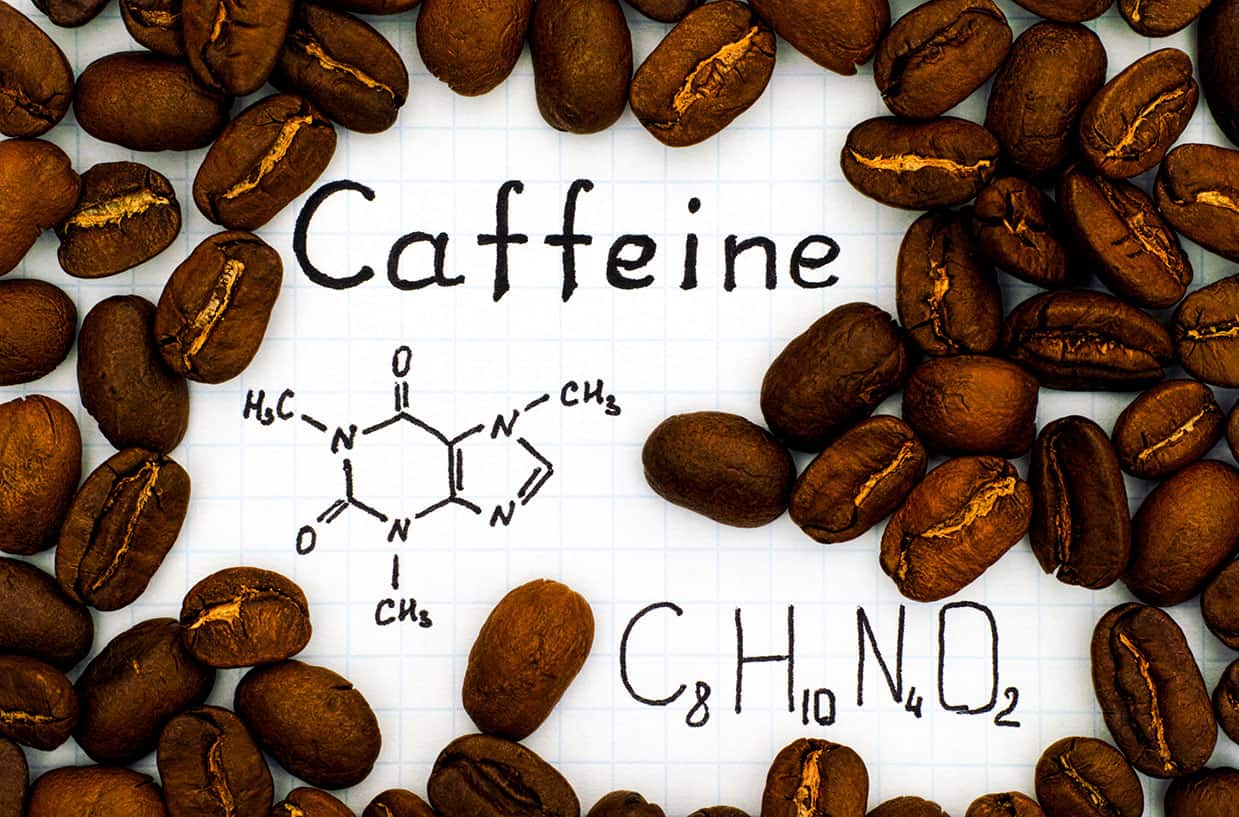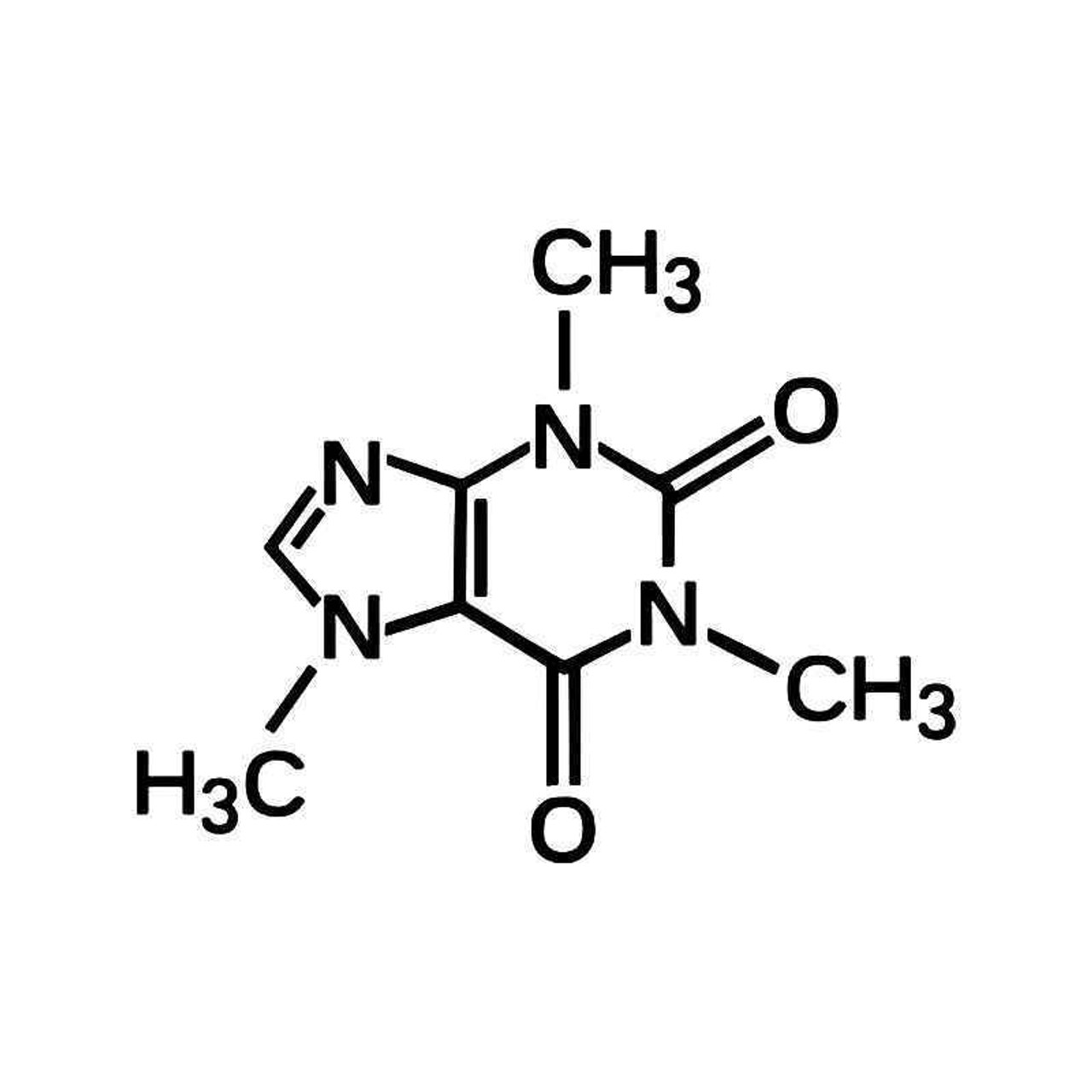
Tea usually contains about half as much caffeine per serving as coffee, depending on the strength of the brew. Tea is another common source of caffeine. Coffee also contains trace amounts of theophylline, but no theobromine. Arabica coffee normally contains less caffeine than the robusta variety. Generally, dark-roast coffee has less caffeine than lighter roasts because the roasting process reduces the bean's caffeine content. In general, one serving of coffee ranges from 40 milligrams, for a single shot (30 milliliters) of arabica-variety espresso, to about 100 milligrams for a cup (120 milliliters) of drip coffee. Caffeine content in coffee varies widely depending on the type of coffee bean and the method of preparation used even beans within a given bush can show variations in concentration. The world's primary source of caffeine is the coffee bean (the seed of the coffee plant), from which coffee is brewed. Many natural sources of caffeine also contain widely varying mixtures of other xanthine alkaloids, including the cardiac stimulants theophylline and theobromine and other substances such as polyphenols which can form insoluble complexes with caffeine. This is not true because caffeine is an achiral molecule, and therefore has no enantiomers nor does it have other stereoisomers. Some yerba mate enthusiasts assert that mateine is a stereoisomer of caffeine, which would make it a different substance altogether. Two of caffeine's alternative names, mateine and guaranine, are derived from the names of these plants. Other, less commonly used, sources of caffeine include the yerba mate and guarana plants, which are sometimes used in the preparation of teas and energy drinks.

The most commonly used caffeine-containing plants are coffee, tea, and to a lesser extent cocoa. It is therefore understood that caffeine has a natural function as both a natural pesticide and as an inhibitor of seed germination of other nearby coffee seedlings thus giving it a better chance of survival. High caffeine levels have also been found in the surrounding soil of coffee bean seedlings. Occurrence Roasted coffee beans, the world's primary source of caffeineĬaffeine is a plant alkaloid, found in many plant species, where it acts as a natural pesticide, with high caffeine levels being reported in seedlings that are still developing foliages, but are lacking mechanical protection caffeine paralyzes and kills certain insects feeding upon the plant. One 2008 study suggested that women consuming 200 milligrams or more of caffeine per day had about twice the miscarriage risk as women who drank none, while another 2008 study found no link between miscarriage and caffeine consumption. Food and Drug Administration lists caffeine as a "Multiple Purpose Generally Recognized as Safe Food Substance". In North America, 90% of adults consume caffeine daily. Caffeine is the world's most widely consumed psychoactive substance, but unlike most others, it is legal and unregulated in nearly all jurisdictions. Beverages containing caffeine, such as coffee, tea, soft drinks and energy drinks enjoy great popularity. In humans, caffeine is a central nervous system (CNS) stimulant, having the effect of temporarily warding off drowsiness and restoring alertness.

Other sources include yerba mate, guarana berries, and the Yaupon Holly. It is most commonly consumed by humans in infusions extracted from the beans of the coffee plant and the leaves of the tea bush, as well as from various foods and drinks containing products derived from the kola nut or from cacao. Caffeine is also called guaranine when found in guarana, mateine when found in mate, and theine when found in tea all of these names are synonyms for the same chemical compound.Ĭaffeine is found in varying quantities in the beans, leaves, and fruit of over 60 plants, where it acts as a natural pesticide that paralyzes and kills certain insects feeding on the plants. He coined the term "kaffein", a chemical compound in coffee, which in English became caffeine. Caffeine was discovered by a German chemist, Friedrich Ferdinand Runge, in 1819. OverviewĬaffeine is a bitter white crystalline xanthine alkaloid that acts as a psychoactive stimulant drug and a mild diuretic (speeds up urine production) in humans and other animals. Associate Editor(s)-in-Chief: Kiran Singh, M.D. Risk calculators and risk factors for CaffeineĮditor-In-Chief: C. US National Guidelines Clearinghouse on Caffeineĭirections to Hospitals Treating Caffeine Articles on Caffeine in N Eng J Med, Lancet, BMJ


 0 kommentar(er)
0 kommentar(er)
